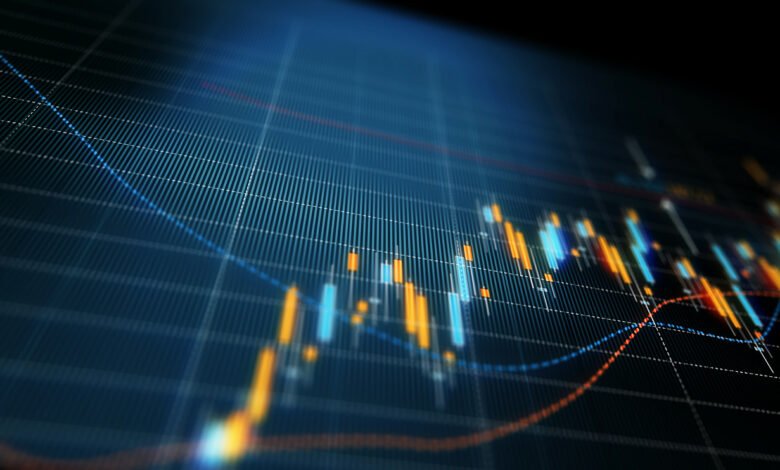Asian shares fall, tracking Wall St dismay over price data in 2022

Asian shares fall, tracking Wall St dismay over price data
Asian markets skidded lower on Wednesday after Wall Street fell the most since June 2020 as a report showed inflation has kept a surprisingly strong grip on the US economy.
Most regional benchmarks fell more than 2 per cent, but were holding steady.
US futures edged higher, with the contracts for the Dow industrials and the S and P 500 up 0.2 per cent. European futures were lower.

A report on Tuesday showed US inflation decelerated only to 8.3 per cent in August, instead of the 8.1 per cent economists expected.
That dashed hopes that inflation was falling back to more normal levels after peaking in June at 9.1 per cent, allowing the Federal Reserve to moderate its interest rate hikes.
Tensions between the US and China also were weighing on sentiment. Chinese leader Xi Jinping and Russian President Vladimir Putin are due to meet later in the week, underscoring the countries’ warming ties as the West pushes ahead with sanctions against Moscow for its invasion of Ukraine.
The meeting on Thursday in Samarkand, Uzbekistan, on the sidelines of a summit of a security pact dominated by Moscow and Beijing, reflect the strong ties between the former Communist rivals now locked in rivalry with the US.
The US is meanwhile reportedly considering new sanctions against Beijing aimed at deterring aggression against Taiwan, a self-governed island democracy that China claims as its own territory.
Hong Kong’s Hang Seng index lost 2.6 per cent to 18,831.88 and the Shanghai Composite index declined 0.9 per cent, to 3,234.18.
Tokyo’s benchmark Nikkei 225 lost 2.2 per cent to 27,991.82, while Sydney’s S and P/ASX 200 declined 2.4 per cent to 6,839.50. In Seoul, the Kospi lost 1.5 per cent to 2,414.26.
On Tuesday, the Dow lost more than 1,250 points and the S and P 500 sank 4.3 per cent to 3,932.69. The Dow fell 3.9 per cent to 31,104.97 and the Nasdaq composite closed 5.2 per cent lower, at 11,633.57.
Bond prices also fell sharply, sending their yields higher. The yield on the two-year Treasury, which tends to track expectations for Fed actions, soared to 3.74 per cent from 3.57 per cent late on Monday.
The 10-year yield, which helps dictate where mortgages and rates for other loans are heading, rose to 3.42 per cent from 3.36 per cent.
Traders are bracing for the Federal Reserve to ultimately raise interest rates more than expected to combat inflation, with all the risks for the economy that entails.
Most of Wall Street came into the day thinking the Fed would hike its key short-term rate by a hefty three-quarters of a percentage point at its meeting next week and then reduce the size of its rate hikes through the end of this year, potentially holding steady through early 2023.

Traders now see a one-in-three chance the Fed will hike the benchmark rate by a full percentage point next week, quadruple the usual move. No one in the futures market was predicting such a hike a day earlier.
The Fed has already raised its benchmark interest rate four times this year, with the last two increases by three-quarters of a percentage point. The federal funds rate is currently in a range of 2.25 per cent to 2.50 per cent.
Higher rates hurt the economy by making it more expensive to buy a house, a car or anything else usually purchased on credit. Mortgage rates have already hit their highest level since 2008, creating pain for the housing industry.
The hope is that the Fed can pull off the tightrope walk of slowing the economy enough to snuff out high inflation, but not so much that it creates a painful recession.
Tuesday’s data casts doubt on hopes for such a soft landing . Higher rates also hurt prices for stocks, bonds and other investments.

Expectations for a more aggressive Fed have also helped the dollar add to its already strong gains for this year. The dollar has been surging against other currencies in large part because the Fed has been hiking rates faster and by bigger margins than many other central banks.
That’s especially true for Japan, where the benchmark rate remains at minus 0.1 per cent.
The dollar bought 144.56 Japanese yen, down from 144.57 yen late on Tuesday. The euro rose to 0.9983 cents, up from 0.9969 cents.
US benchmark crude added 22 cents to USD 87.53 per barrel in electronic trading on the New York Mercantile Exchange. It lost 47 cents to USD 87.31 on Tuesday.

Brent crude, the international pricing standard, climbed 15 cents to USD 93.32 per barrel.




